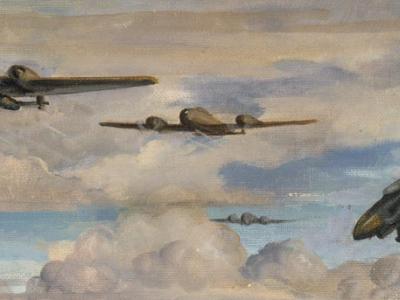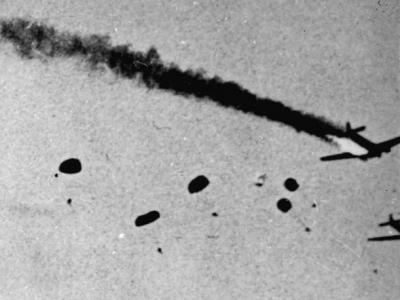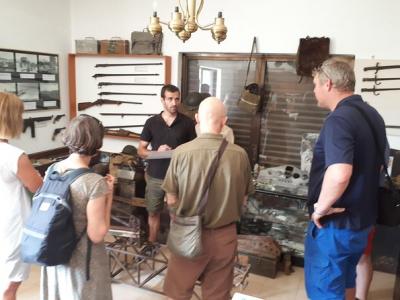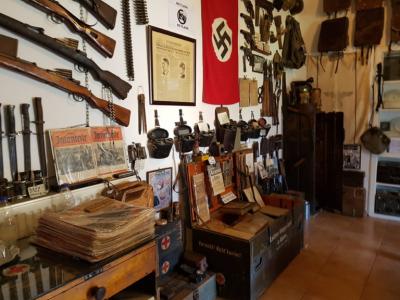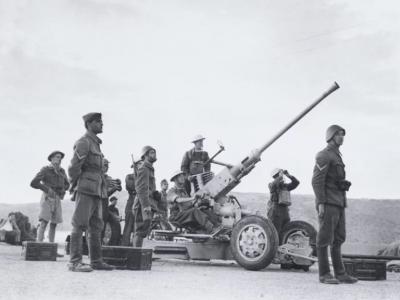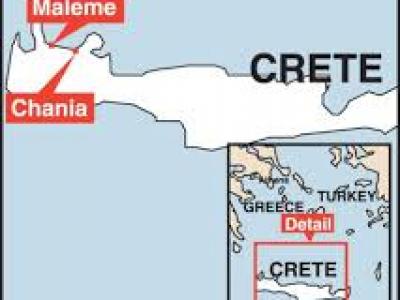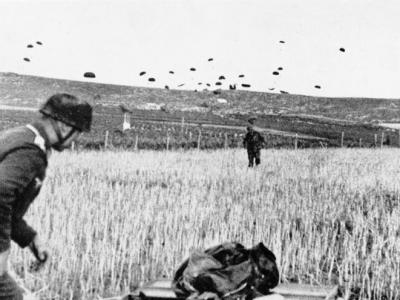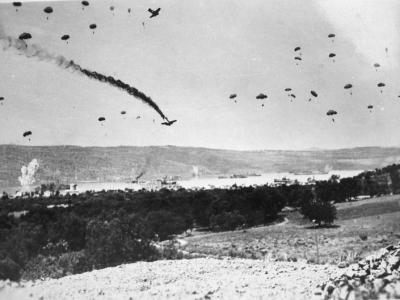The Battle for Crete
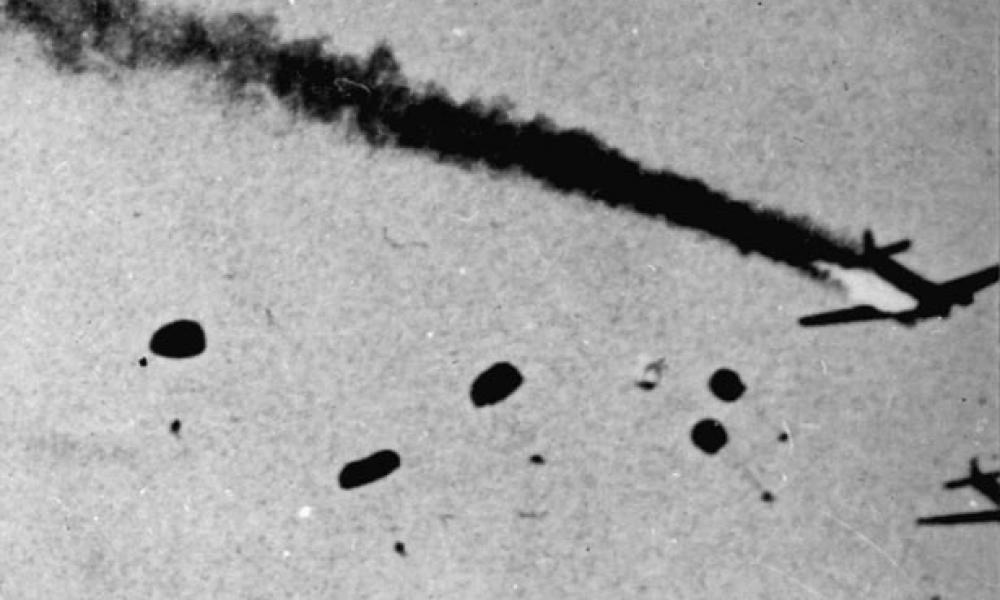
The Battle for Crete
Was one of the most dramatic battles of the Second World War. Over 12 days in May 1941 a mixed force of New Zealanders, British, Australian and Greek troops desperately tried to fight off a huge German airborne assault. Despite suffering appalling casualties, the parachutists and glider-borne troops who led the invasion managed to secure a foothold on the island and eventually gained the upper hand. The battle ended with the evacuation to Egypt of the bulk of the Allied force.
Day one – 20 May 1941: the invasion begins
On 20 May 1941, the Germans launched their invasion of Crete. Landing among or near concealed defensive positions, the glider-borne troops and paratroops suffered heavy casualties. Pockets of survivors managed to establish a foothold on the island, but at the end of the first day the German position was still extremely tenuous.
Day two – 21 May 1941: the battle for Maleme
On 21 May the Germans discovered that the New Zealanders defending Maleme airfield had withdrawn. They were able to consolidate their hold on the airfield and fly in reinforcements. A German attempt to land troops on Crete by sea was foiled when the Royal Navy intercepted the convoy before it was able to reach the coast. New Zealand units near Maleme attempted to recapture the airfield.
Day three – 22 May 1941: counter-attack fails
On 22 May communication and other problems crippled the planned British counter-attack on the Maleme airfield. The Germans consolidated their position by flying in more troops and supplies. The Allies were forced to withdraw from Maleme and form a new front line near the village of Platanias.
Day four – 23 May 1941: securing the line
On 23 May the bulk of the New Zealand forces around Maleme airfield retreated to a new defensive line at Platanias. This position was soon threatened by fresh German forces moving in from the south and the New Zealanders were forced back toward Galatas.
Day five – 24 May 1941: Germans press forward
As British forces braced themselves for a German onslaught against Galatas, the Suda Bay, Retimo and Heraklion sectors suffered ferocious air attacks. While the Germans could now replenish supplies and landmen with ease, Creforce and its provisions were being depleted rapidly.
Day six – 25 May 1941: a black day at Galatas
Galatas was captured by the Germans. A determined counter-attack by New Zealand troops retook the village that night but the reoccupation was short-lived. In the Canea area, British troops had to be withdrawn in order to maintain a shortened defensive line. The day’s events convinced Freyberg that an organised withdrawal of his forces was now his only option
Day seven – 26 May 1941: decision to withdraw
On 26 May the Germans continued to advance eastwards across the island. New Zealand forces withdrew to a line east of Galatas and were subjected to continued air and ground attacks. Elements of Creforce began moving toward Sfakia on the south coast, which seemed to offer the best evacuation point.
Day eight – 27 May 1941: withdrawal to Sfakia begins
Poor communications hindered the withdrawal of the main force to Sfakia on the south coast. Retimo remained cut off from supplies and evacuation routes. The garrison at Heraklion was also isolated and a naval evacuation was planned
Day nine – 28 May 1941: over the White Mountains
The main elements of Creforce began their withdrawal over the White Mountains to Sfakia. Despite sporadic attacks and the arduous nature of the route, a breakdown in German communications ensured that the evacuation path was kept open. While the garrison at Retimo remained isolated, most of the troops at Heraklion were evacuated by ship. At Sfakia preparations were made to evacuate the first troops from the main force.
Day ten - 29 May 1941: awaiting evacuation
As the remnants of Creforce retreated across Crete’s Askifou Plain, the first ships left Sfakia for Egypt. The Germans finally entered Retimo, forcing most of its Australian defenders to surrender. The garrison at Heraklion was evacuated by sea but their convoy suffered heavy losses from German air attacks.
Τhe texts are copied from the site¨https://nzhistory.govt.nz/
